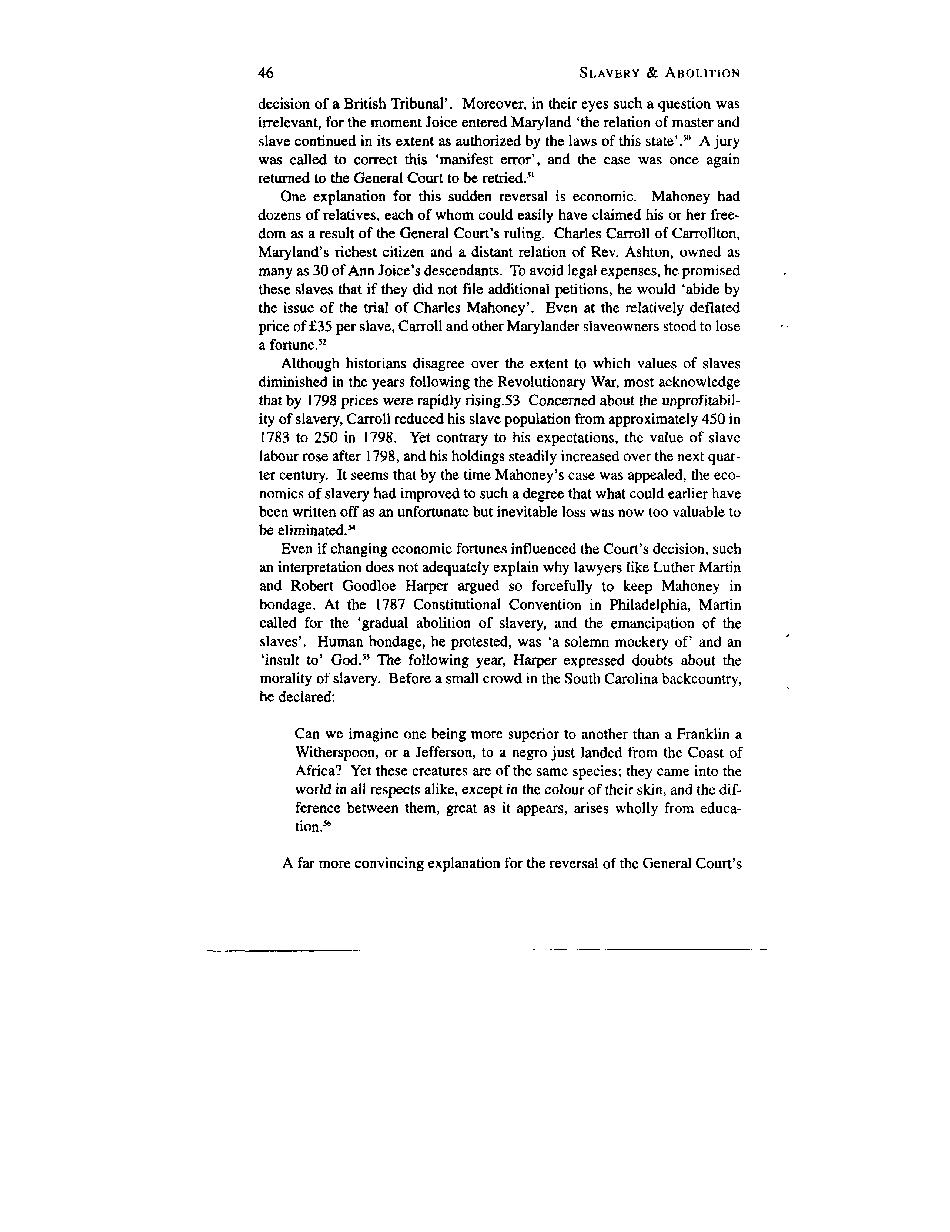|
46 SLAVERY & ABOLITION
decision of a British Tribunal'. Moreover, in their eyes such a question was
irrelevant, for the moment Joice entered Maryland 'the relation of master and
slave continued in its extent as authorized by the laws of this state'.50 A jury
was called to correct this 'manifest error', and the case was once again
returned to the General Court to be retried."
One explanation for this sudden reversal is economic. Mahoney had
dozens of relatives, each of whom could easily have claimed his or her free-
dom as a result of the General Court's ruling. Charles Carroll of Carrollton,
Maryland's richest citizen and a distant relation of Rev. Ashton, owned as
many as 30 of Ann Joice's descendants. To avoid legal expenses, he promised
these slaves that if they did not file additional petitions, he would 'abide by
the issue of the trial of Charles Mahoney'. Even at the relatively deflated
price of £35 per slave, Carroll and other Marylander slaveowners stood to lose
a fortune.52
Although historians disagree over the extent to which values of slaves
diminished in the years following the Revolutionary War, most acknowledge
that by 1798 prices were rapidly rising.53 Concerned about the unprofitabil-
ity of slavery, Carroll reduced his slave population from approximately 450 in
1783 to 250 in 1798. Yet contrary to his expectations, the value of slave
labour rose after 1798, and his holdings steadily increased over the next quar-
ter century. It seems that by the time Mahoney's case was appealed, the eco-
nomics of slavery had improved to such a degree that what could earlier have
been written off as an unfortunate but inevitable loss was now too valuable to
be eliminated.54
Even if changing economic fortunes influenced the Court's decision, such
an interpretation does not adequately explain why lawyers like Luther Martin
and Robert Goodloe Harper argued so forcefully to keep Mahoney in
bondage. At the 1787 Constitutional Convention in Philadelphia, Martin
called for the 'gradual abolition of slavery, and the emancipation of the
slaves'. Human bondage, he protested, was 'a solemn mockery of and an
'insult to' God." The following year, Harper expressed doubts about the
morality of slavery. Before a small crowd in the South Carolina backcountry,
he declared:
Can we imagine one being more superior to another than a Franklin a
Witherspoon, or a Jefferson, to a negro just landed from the Coast of
Africa? Yet these creatures are of the same species; they came into the
world in all respects alike, except in the colour of their skin, and the dif-
ference between them, great as it appears, arises wholly from educa-
tion.36
A far more convincing explanation for the reversal of the General Court's
�
|

